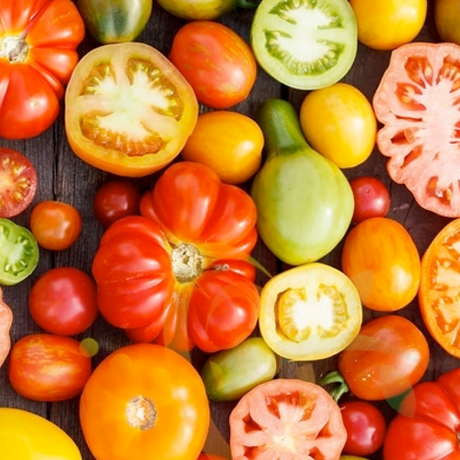Depth to Plant
|
Spacing Between Plants |
Spacing Between Rows |
Days to Germinate (Sprout)
|
Germination
|
Planting Season
|
Sun Re
|
No. of Plants per sq. ft.
|
Soil Requirements
|
|
 Shop for Organic Garlic Cloves & Bulbs |
2" inches deep |
Space about 4" apart |
Space rows about 8"-12" apart |
7 - 21 days | 65F - 75F | Spring Fall |
Appx. 12"-24" tall | Appx. 16 plants per sq. ft. | Prefers soil with pH levels of 6.5 - 7.0 |
How to Plant Garlic
Garlic can be planted in the spring as soon as the ground can be worked, but fall planting is recommended. Bulbs will grow bigger and more flavorful when you plant them in the fall. Plant 6 to 8 weeks before your first hard frost. In southern areas, February or March can be a better time to plant.Garlic does NOT like growing in "wet feet". It can easily rot if it is left in soil that is too wet, for too long. To help remedy this issue, grow your garlic in raised beds or containers with plenty of sand and organic matter mixed into the soil.
Click here to shop all Organic Garlic Cloves & Bulbs
Key Planting Info:
- Break apart cloves from bulb but keep the papery husk on each individual clove.
- Ensure soil is well-drained with plenty of organic matter. Plant in Full Sun.
- Plant 4 inches apart & 2 inches deep, in their upright position (the wide end down and pointed end facing up).
- Come springtime, shoots will begin to emerge.
How to Take Care of Garlic
Northern states should mulch with straw for overwintering. Remove mulch in the spring after the threat of frost is over. (Young shoots can't survive in temps below 20°F on their own. Keep them under cover.)
Cut off any flowering shoots that come up in the springtime. They will decrease the size of the bulb.
Fertilize with nitrogen, especially if you see yellowing leaves.
Water once every 3-5 days during bulb-ing (mid-May through June).
When and How to Harvest
You’ll know it’s time to harvest your garlic when the tops are yellow and they begin to fall over. Harvest the garlic before the tops are completely dry.
Gently lift the bulbs with a spade or garden fork. When you remove them from the soil, carefully brush off the soil and let them cure in an airy, shady spot for two weeks. Try hanging them upside down on a string. The key to curing them is making sure that they have good air circulation.
How to Store Garlic
Your garlic will be ready to store when the wrappers are dry and papery and the roots are also very dry. The head of the root should be hard and the cloves should come apart easily.
Remote all dirt, roots & leaves. Keep the papery wrapper on—but remove any dirty parts.
Bulbs should be stored in a cool (40 degrees F), dark, dry place, for several months.
The flavor of your garlic will increase as your bulbs are curing and drying.
Here's a fact: Your cured garlic can keep well in storage for AT LEAST 6 months, up to an ENTIRE YEAR! Store it in a place with good air circulation, 65-70% humidity, and temps. around 35-50 degrees F.
Remember: Make sure you save a few cloves of garlic from each head to plant again next year.
















































